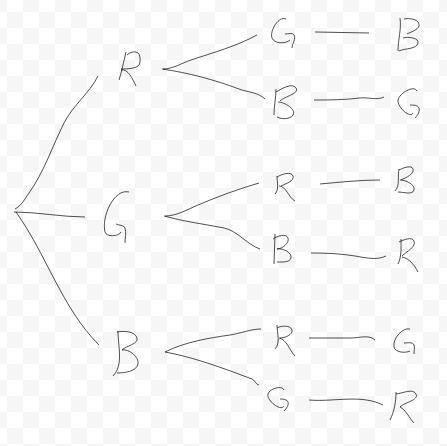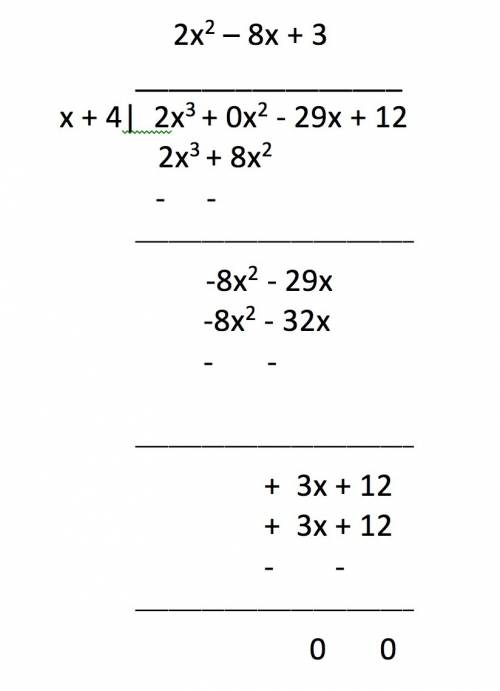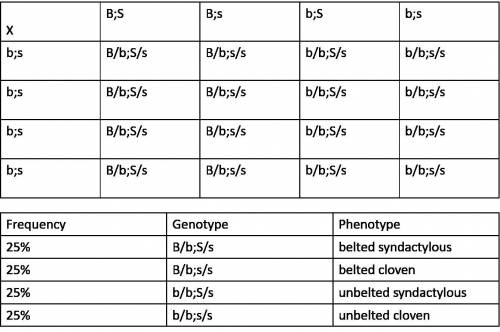 7
7 See explanation
Explanation:
The 8 parts of speech are:
1. Noun - is used to represent the name of anything such as name of people, places, things, animals, food etc.
2. Pronoun - It is used in place of a noun e.g he, it, your, her, our, she.
3. Verb - It is used to represent an action. It shows what someone is doing e.g eat, fight, play etc.
4. Adjective - It helps to qualify a noun e.g. big, small, white, dirty.
5. Adverb - It helps to modify either a verb or an adjective e.g. quickly, loudly, greedily.
6. Preposition - It is used to connect nouns or pronouns together. e.g. into, until, of, with, during, at, from, including, against etc.
7. Conjunction - It is used in linking of phrases or words together e.g and, nor, but, yet, so.
8. Interjection - It is used to show surprise or a sudden feeling.
The parts of speech that represents the underlined words are:
1. He = Pronoun
2. Silently = Adverb
3. Hey! = Interjection
4. Liam = Noun
5. Almost = Adverb
6. Us = Pronoun
7. French = Adjective
8. Jumped = Verb
9. In = Preposition
10. Understand = Verb
11. And = Conjunction
12. Your = Pronoun
13. Beautiful = Adjective
14. Wow! = Interjection
15. Concert = Noun
16. Against = Preposition
17. For = Conjunction
18. Italy = Noun
19. Or = Conjunction
20. So = Conjunction
21. Honesty = Noun
22. Her = Pronoun
23. Eight-foot = Adjective
24. Are = Verb
25. Perfectly = Adverb
26. Park = Noun
27. Refreshing/Hot = Adjective
28. Everyone = Pronoun
29. Stars = Noun
30. Ouch! = Interjection
31. Athletes = Noun
32. Down = Adverb
33. Your = Pronoun
34. Group = Noun
35. Team = Noun
36. Intelligent = Adjective
37. Outside = Preposition
38. Whose = Pronoun
39. New = Adjective
40. Yellow = Adjective
41. Speaks = Verb
42. Tomorrow = Adverb
43. Is = Verb
44. Beyond = Preposition
45. Seemed = Verb
46. Weakness = Noun
47. Gently = Adverb
48. Oh! = Interjection
49. Over = Preposition
50. But = Conjunction
 8
8  8
8  6
6 1. Is B. 1.5 to 2.2
2. Is A. High-speed CAN
3. Is B. Energy Storage device
4. Is C. Allow reverse current to flow
5. Is B. Transistor
7. Is C. Farad
11. Is D. 0 and 7V
12. Is C. Both A and B
13. Is A. The wire is connected between two grounds
14. Is D. A lower current circuit controls a higher current circuit
15 is B. Powertrain control module
The others I don't know good luck
 12
12 See the attached image. The tree should consist of paths (left-to-right) that exhaust all the possible arrangements. 3 choices for the first bag (R, G, or B), 2 choices for the second (color availability depends on the first bag), and 1 for the third (again dependent on previous color), so there are  possible arrangements/permutations.
possible arrangements/permutations.

 7
7 See explanation
Explanation:
The 8 parts of speech are:
1. Noun - is used to represent the name of anything such as name of people, places, things, animals, food etc.
2. Pronoun - It is used in place of a noun e.g he, it, your, her, our, she.
3. Verb - It is used to represent an action. It shows what someone is doing e.g eat, fight, play etc.
4. Adjective - It helps to qualify a noun e.g. big, small, white, dirty.
5. Adverb - It helps to modify either a verb or an adjective e.g. quickly, loudly, greedily.
6. Preposition - It is used to connect nouns or pronouns together. e.g. into, until, of, with, during, at, from, including, against etc.
7. Conjunction - It is used in linking of phrases or words together e.g and, nor, but, yet, so.
8. Interjection - It is used to show surprise or a sudden feeling.
The parts of speech that represents the underlined words are:
1. He = Pronoun
2. Silently = Adverb
3. Hey! = Interjection
4. Liam = Noun
5. Almost = Adverb
6. Us = Pronoun
7. French = Adjective
8. Jumped = Verb
9. In = Preposition
10. Understand = Verb
11. And = Conjunction
12. Your = Pronoun
13. Beautiful = Adjective
14. Wow! = Interjection
15. Concert = Noun
16. Against = Preposition
17. For = Conjunction
18. Italy = Noun
19. Or = Conjunction
20. So = Conjunction
21. Honesty = Noun
22. Her = Pronoun
23. Eight-foot = Adjective
24. Are = Verb
25. Perfectly = Adverb
26. Park = Noun
27. Refreshing/Hot = Adjective
28. Everyone = Pronoun
29. Stars = Noun
30. Ouch! = Interjection
31. Athletes = Noun
32. Down = Adverb
33. Your = Pronoun
34. Group = Noun
35. Team = Noun
36. Intelligent = Adjective
37. Outside = Preposition
38. Whose = Pronoun
39. New = Adjective
40. Yellow = Adjective
41. Speaks = Verb
42. Tomorrow = Adverb
43. Is = Verb
44. Beyond = Preposition
45. Seemed = Verb
46. Weakness = Noun
47. Gently = Adverb
48. Oh! = Interjection
49. Over = Preposition
50. But = Conjunction
 6
6 1. Is B. 1.5 to 2.2
2. Is A. High-speed CAN
3. Is B. Energy Storage device
4. Is C. Allow reverse current to flow
5. Is B. Transistor
7. Is C. Farad
11. Is D. 0 and 7V
12. Is C. Both A and B
13. Is A. The wire is connected between two grounds
14. Is D. A lower current circuit controls a higher current circuit
15 is B. Powertrain control module
The others I don't know good luck
Part 1) x=3
Part 2) x = −1.11 and x = 1.11
Part 3) 105
Part 4) a = −6, b = 9, c = −7
Part 5) x equals 5 plus or minus the square root of 33, all over 2
Part 6) In the procedure
Part 7) 
Part 8) The denominator is 2
Part 9) a = −6, b = −8, c = 12
Step-by-step explanation:
we know that
The formula to solve a quadratic equation of the form  is equal to
is equal to

Part 1)
in this problem we have

so

substitute in the formula



Part 2) in this problem we have

so

substitute in the formula



Part 3) When the solution of x2 − 9x − 6 is expressed as 9 plus or minus the square root of r, all over 2, what is the value of r?
in this problem we have

so

substitute in the formula


therefore

Part 4) What are the values a, b, and c in the following quadratic equation?
−6x2 = −9x + 7
in this problem we have


so

Part 5) Use the quadratic formula to find the exact solutions of x2 − 5x − 2 = 0.
In this problem we have

so

substitute in the formula


therefore
x equals 5 plus or minus the square root of 33, all over 2
Part 6) Quadratic Formula proof
we have

Divide both sides by a

Complete the square


Rewrite the perfect square trinomial on the left side of the equation as a binomial squared

Find a common denominator on the right side of the equation

Take the square root of both sides of the equation

Simplify the right side of the equation

Subtract the quantity b over 2 times a from both sides of the equation


Part 7) in this problem we have

so

substitute in the formula




therefore
The other solution is

Part 8) in this problem we have

so

substitute in the formula




therefore
The denominator is 2
Part 9) What are the values a, b, and c in the following quadratic equation?
−6x2 − 8x + 12
in this problem we have

so

 20
20  ÷
÷





 ×
× =
= where
where 
 ×
×

 with remainder of 248
with remainder of 248 ÷
÷
 ×
×
 ×
×
 we obtain
we obtain 
 ÷
÷
 ×
×
 ×
×
 and
and  gives a simplest form
gives a simplest form



 gives us the simplified form
gives us the simplified form



 gives the simplified form
gives the simplified form












e. B/b,S/s x b/b;s/s
Explanation:
Here, there is a dihybrid cross between two loci: B (for a white belt around the body) and S (for syndactyly). For each locus, genotypes and phenotypes should be:
- B/B or B/b: Belted hog
- b/b: wild type or unbelted.
- S/S or S/s: syndactylous hog.
- s/s: wild type or cloven-hoofed hog.
So, if a belted syndactylous sow was crossed with an unbelted cloven-hoofed boar, there are different possible gentotypes for the first animal:
Belted syndactylous sow: B/b;S/s, B/B;S/S, B/b;S/S or B/B;S/s.
Unbelted hoofed boar: b/b;s/s (because the wild type phenotype is recessive).
Progeny has the following phenotypes frequencies:
25% belted syndactylous
25% belted cloven
25% unbelted syndactylous
25% unbelted cloven
"Unbelted" and "cloven" are recessive conditions, therefore, both parents must have recessive alleles to inherit them to their progeny. For this reason, the most probable answer is "e. B/b;S/s x b/b;s/s". However, in the image, there is the Punnett Square that confirms this answer.


It will provide an instant answer!
